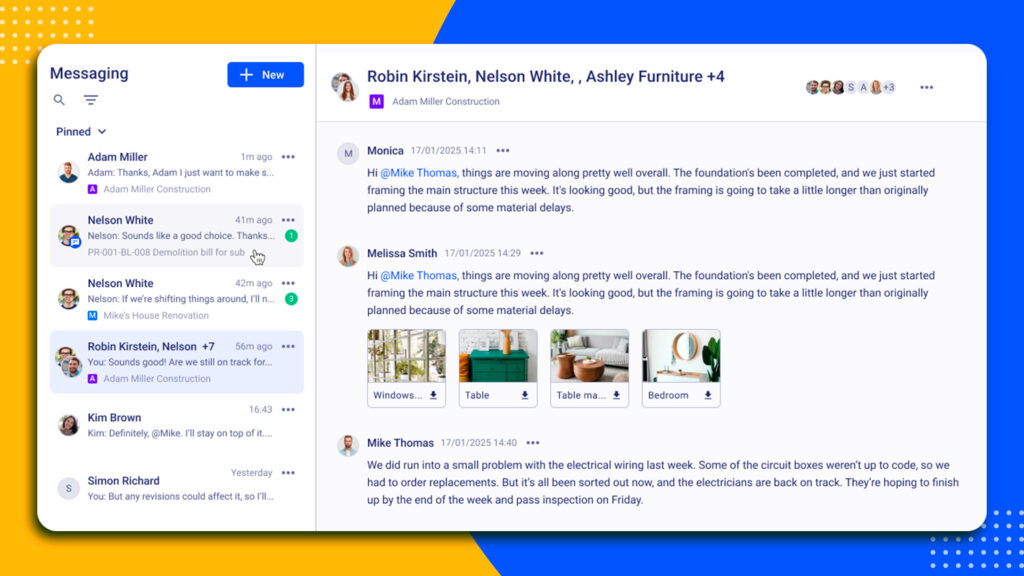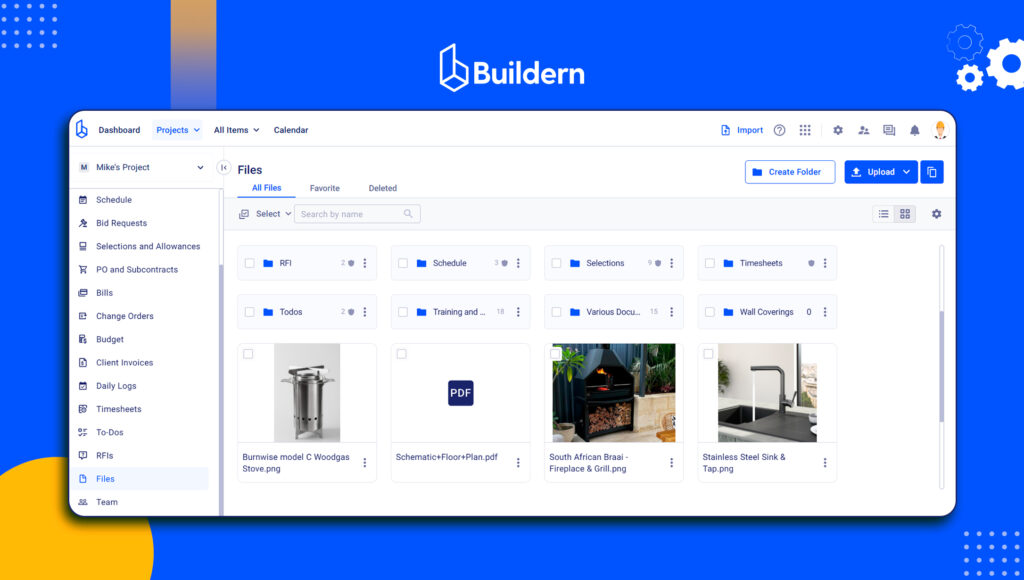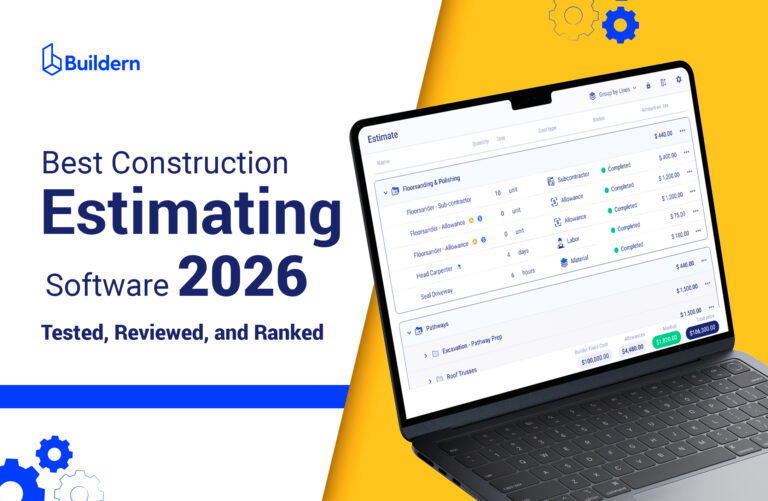On-Site to Office: Using Mobile App Photos for Real-Time Reporting

One of the biggest risks on any construction project comes from the time it takes for information to travel between the job site and the office. Site crews deal with shifting conditions every day, such as deliveries arriving late, the weather interrupting schedules, or subcontractors facing conflicts in the field. When those updates reach the office hours or even days later, managers are left working with outdated information.
Decisions based on yesterday’s conditions create construction rework, push schedules off track, and add costs that were never planned for.
That’s how I’ve learned about mobile photo reporting that provides a simple and effective way to close this gap. With a smartphone, field staff can capture job site conditions in seconds.
Continue reading as I share some personal insights and tips on how those images reach the office almost immediately, giving the managers the same context as the on-site crew.
Table of Contents
- The Communication Gap in Construction
- Common Challenges Between Site and Office
- Why Traditional Reporting Falls Short
- The Power of Photos in Construction Reporting
- Mobile Apps as the Bridge Between Field and Office
- Best Practices for Adopting Mobile Photo Reporting

The Communication Gap in Construction
Miscommunication has always been a costly problem in construction, and recent numbers show just how damaging it still is. Autodesk and FMI reported in 2023 that U.S. builders lost more than $88 billion in a single year to rework tied to poor data and unclear communication. That figure represents real project delays, hours spent waiting on instructions, budgets thrown off by repeated work, and construction managers left trying to explain why progress doesn’t match reports.
The breakdown usually isn’t about effort.
- Site crews focus on keeping production moving.
- Office staff concentrate on schedules, contracts, and cost reports.
Both groups work hard, but they use very different methods to share updates. A foreman may send a quick text or call during a busy shift. The office expects something more structured that fits into reporting systems. When those two approaches collide, information slips through the cracks.
Smaller firms aren’t immune. Running two or three jobs at once can strain communication just as much as managing a high-rise build. One foreman handling multiple subcontractors may not provide updates until the end of the day. That small delay is enough to hold up payments or push back an inspection. When profit margins are already tight, those avoidable gaps matter.
Common Challenges Between Site and Office
The gap between the site and the office does not appear in a single form. It shows up in many small ways across daily reporting, and together those gaps make it harder for teams to trust the information they receive.
What seems like a minor delay or a slight misunderstanding often grows into something larger once multiple trades and stakeholders are involved.
Delayed Updates and Decisions
By the time site notes reach the office, the situation may already have changed. A storm delay in the morning might be resolved by the afternoon, yet the office still plans the schedule around the initial disruption. Managers end up making choices based on information that is already outdated. That kind of lag forces procurement orders, crew scheduling, and even client communication to rely on assumptions instead of facts.
A simple example: A concrete pour gets pushed back a day because of rain. If the office I work with doesn’t hear about it until the next morning, the framing subcontractor arrives on-site to find no slab ready.
Miscommunication Across Emails, Texts, or Calls
A construction superintendent may send a quick text to confirm a delivery. A subcontractor hears something different over the phone. An architect responds to an email chain with slightly revised instructions. By the end of the day, three versions of the same update exist, and none of them match.
This problem grows when more stakeholders are involved. Engineers, inspectors, and clients all receive partial information. Aligning those versions takes time, and until the confusion is resolved, teams work with different assumptions.
The result we got is duplicated effort, errors in execution, and wasted labor.
Incomplete or Inaccurate Documentation
Written notes alone often leave too much room for interpretation. What looks minor in text may be serious in reality. A “hairline crack” written in a daily report might not raise concerns in the office, but a photo could reveal structural damage that requires immediate attention. Without visual evidence, accountability becomes harder to enforce.
I can list many cases where incomplete documentation has escalated into disputes lasting months. Each party defends its own version of events because no shared record exists. Resolving those disagreements usually requires additional inspections, external experts, or costly corrective work, all of which could have been avoided with consistent, photo-based updates from the start.
Why Traditional Reporting Falls Short
Paper logs and spreadsheets were once the standard for job reporting. They still show up on sites today, but the pace of modern projects makes them harder to rely on. Our crews move fast, clients want immediate answers, and multiple trades depend on the same flow of information.
This simply means that old systems can’t keep up.
Reliance on Paper Logs or Excel Updates
Most foremen still take notes by hand. Hours later, those notes end up on a desk in the office. By then, the conditions may already be different. And if someone has to retype the information, typos and minor errors can be unavoidable.
- A misread number.
- Handwriting that no one can decipher.
- A cell in a spreadsheet copied into the wrong row.
These are small mistakes, but once they start affecting the budgets or schedules, the impact grows.
Searching past records is just as slow. A superintendent looking for when a crane inspection took place might dig through binders or old emails. Even in Excel, version control becomes a problem if one person updates a file on their laptop while another is still looking at the copy from last week.
Lack of Visual Evidence
Text alone can’t show what’s happening on-site. A note might read “formwork stripped,” but it doesn’t show if the surface is clean or if bracing was removed correctly. Without a photo, the office is left guessing. That uncertainty slows down approvals and forces calls back to the field for clarification.
The difference is clear when you look at an example. “Ceiling grid complete” written in a message leaves plenty of room for doubt. Was it level? Were the materials the right type? A quick photo attached to the message would answer those questions. Without it, the office works on assumptions.

Time Lost in Consolidating Multiple Sources of Data
Field supervisors often spend hours pulling updates together. One note from a paper log. A text thread with photos. A handful of emails with schedule changes. All of it has to be stitched into a single report. That time is better spent running the work on-site, not piecing together information after hours.
From what I can say from my experience, the same issue shows up when clients ask for updates. A project manager may need to grab notes from a foreman, pictures from a WhatsApp group, and delivery confirmations from emails just to create a short report.
Reconciling the differences takes even more time. On a job that moves quickly, that kind of lag costs days, not hours.
The Power of Photos in Construction Reporting
Photos carry a level of clarity that written notes rarely match.
A single image of a cracked slab or a completed wall shows the situation without extra explanation. Words leave room for interpretation, while images show the exact picture.
Progress tracking becomes easier when photos are part of the record
Managers in the office can compare daily or weekly photos against the project schedule and see exactly what has been finished. That avoids the common debates over whether a task is 20% done or closer to 50%. A dated image makes the discussion factual instead of subjective.
Problem resolution also speeds up
Instead of multiple calls to confirm what happened, the office looks at the same picture the crew took in the field. If an HVAC unit ends up in the wrong place, a photo documents the mistake immediately.
Photos are just as valuable for documenting safety
When incidents or near misses occur, images capture the conditions in real time. Those records matter for compliance checks and can also protect the contractor in the event of a claim. Timestamped photos show what the site looked like at the moment of the event, providing evidence that simple notes cannot supply.
There is another long-term benefit: history
When warranty questions come up years later, a photo record shows how the work was originally installed. It helps resolve whether a defect came from construction or from later use.
Mobile Apps as the Bridge Between Field and Office
Mobile apps have changed the way photos move from site to office. Instead of sitting on someone’s personal phone or getting passed around in text threads, the construction team I worked with captures, tags, and stores photos in a single project system.
That shift turns casual photos into usable project data.
Daily Logs and Progress Tracking
Superintendents can build daily logs that include mobile app photos of site conditions. Those logs show weather, progress, and workforce activity in a format that the office can review immediately. Clients benefit too. They see progress without waiting for end-of-week summaries or walking the site themselves. Over time, those logs become a reliable archive of how the project developed.
Quality Control and Issue Resolution
Photos strengthen quality control. Punch-list items, defects, or unsafe conditions are documented in seconds. The office reviews and responds before the problem spreads through later phases of work. Imagine a waterproofing detail installed incorrectly if caught early through a photo, the fix costs little. If missed until drywall is finished, the rework becomes expensive and disruptive.
Client Updates and Stakeholder Transparency
Clients often want to see evidence of progress at key milestones. Mobile apps make this easy. Instead of sending scattered pictures by email, project managers can share organized photo updates tied to scheduled dates. This builds trust and reduces the constant back-and-forth of “Where do we stand?” calls.
Linking Photos With Estimating, Scheduling, and Billing
Another advantage comes from connecting photos to the financial side of a project. Estimators can use historical images to refine future bids. Office managers can link mobile app photos to schedules and invoices to confirm that billed work matches what was completed. If a subcontractor claims 80% completion, dated photos serve as evidence. This reduces disputes and shortens payment cycles.
Centralized Storage and Easy Access

Finally, centralized storage matters for long-term access. When every photo is tagged and archived in the same system, retrieval is simple. Project managers can pull up images for audits, warranty claims, or contract negotiations in minutes. Without that structure, teams waste hours digging through old emails or personal phones.
Ultimately, centralized systems eliminate that risk and give the company a permanent, organized record of its work.
Best Practices for Adopting Mobile Photo Reporting
Mobile photo reporting only works when it is applied consistently. Technology alone does not solve the problem.
I’ve learned that the following practices help ensure photos become a reliable part of the reporting process rather than scattered files that add little structure.
- Train field staff on consistent photo practices. Crews need guidance on what to capture, from which angles, and how often. Without training, photos vary too much to be useful.
- Establish company-wide standards. Standards clarify how often photos should be taken, how they are labeled, and where they are stored.
- Ensure backups and security. Construction photos often serve as contractual or legal evidence. Cloud backups protect against device loss or accidental deletions, while security protocols keep sensitive project data from leaking outside the organization.
- Integrate with other workflows. Photos gain value when they connect to schedules, invoices, or estimating systems.
- Audit usage periodically. Reviewing how teams use photo reporting every few months highlights gaps. If crews stop labeling correctly or delays creep back in, small adjustments restore consistency before the process breaks down.
- Use metadata. Most devices record timestamps and GPS data automatically. Keeping that information intact adds credibility to the photos. It strengthens their use in disputes, audits, or compliance checks.
- Provide role-specific guidance. A superintendent may need broad progress photos, while a safety manager focuses on documenting potential hazards. Estimators may benefit from detailed images of completed assemblies to refine future takeoffs. Tailoring standards by role ensures each group captures what matters most to their function.
How Do Photos Improve Construction Reporting?
Photos cut through ambiguity. Instead of relying on a short note or a phone call, managers, subcontractors, and clients see the same condition with their own eyes. This reduces debate, speeds up approvals, and helps teams make decisions with confidence. A dated image of progress also becomes part of the project’s record, making it easier to compare actual work against planned schedules.
Can Mobile App Photos Be Used as Legal or Contractual Proof?
Yes, provided they are captured and stored properly. A photo with a timestamp and metadata is far more reliable than a handwritten note. Courts and insurers often accept photos as supporting evidence for claims, safety issues, or scope disputes. For contractors, this makes consistent photo documentation a safeguard. It shows compliance, protects against unfounded claims, and helps resolve disagreements without long negotiations.
What Are the Best Practices for Taking Job Site Photos?
Good practices make photos usable. Capture the same task from multiple angles to remove doubt. Include reference points, such as measuring tapes or workers, so the scale is clear. Make sure photos are labeled with task names, dates, or cost codes rather than left as “IMG_1234.”
How Does Buildern’s Mobile App Organize and Store Job Site Photos?
Mobile app photos are automatically connected to the right project and activity when uploaded. They are stored in a secure, centralized library where both field and office teams can access them. This prevents photos from being lost in email chains or stored on personal devices. When audits, warranty claims, or disputes arise, the company has a structured archive ready for review.
Key Takeaways
- Industry reports show billions lost each year due to rework caused by poor or delayed information flow between the site and office.
- A single, well-documented image conveys progress, delays, or issues more effectively than a page of notes.
- By linking photos to daily logs, cost codes, schedules, and invoices, construction mobile apps transform casual images into structured records. Both field and office teams work from the same information, stored in a system where nothing gets lost in personal devices or message threads.
- Clear rules on what to photograph, how to label it, and how often to upload are critical. Backups, security protocols, and periodic audits ensure that photo reporting remains consistent and reliable across projects.



